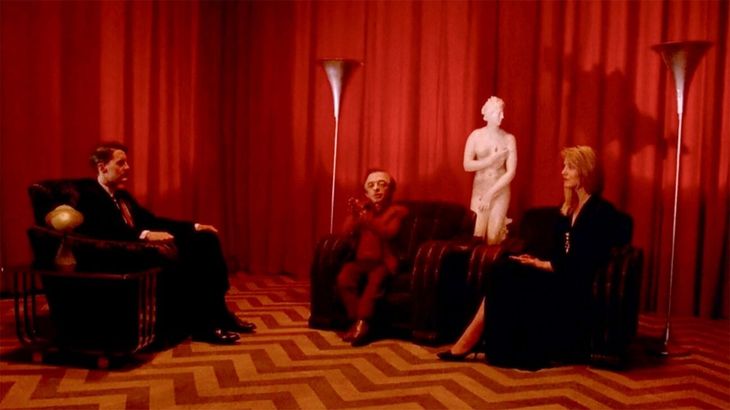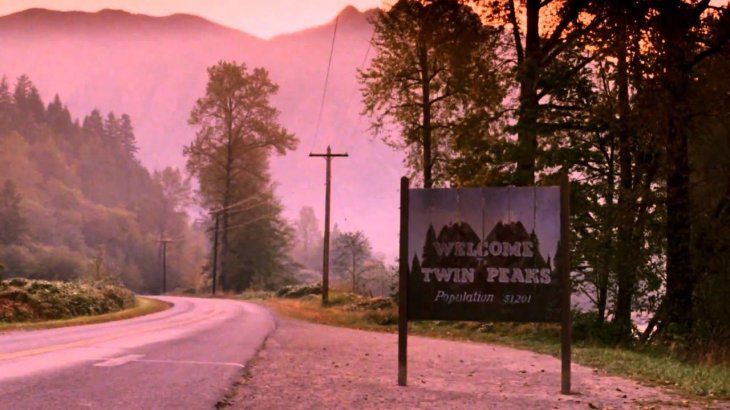35 years ago, a small town in the state of Washington immersed himself in a darkness as deep as his dense pine forests. On April 8, 1990, the world witnessed the premiere of Twin Peaksa series that would not only revolutionize television, but also leave an indelible mark on popular culture, consolidating the remembered David Lynchas a visionary narrator of the dreamlike and the macabre.
Before entering the mystery of “Who killed Laura Palmer?” It is crucial to remember the film universe that Lynch had built until then. Movies like Eraserhead (1977), a surreal and disturbing debut, already showed their fascination with the grotesque and the abstract. The elephant man (1980) revealed his sensitivity to explore humanity amid deformity, while Dune (1984), although a large -scale project with mixed results, evidenced its aesthetic ambition. Blue Velvet (1986), with his disturbing exploration of hidden darkness under the facade of suburban life, he laid the thematic and stylistic foundations that would resonate strongly on Twin Peaks.
Twin Peaks, the series that revolutionized television
The arrival of Twin Peaks to the small screen through the American signal ABC was a real earthquake. In an era dominated by conventional police dramas and family sitcoms, the series broke into a bold and disconcerting proposal. The mixture of mystery of murder, supernatural elements, black humor and eccentric characters captivated a audience eager for something different.
The premise of the plot was as follows: “The series follows the story of the FBI agent Dale Cooper, who is sent to the fictional people of Twin Peaks (Washington) to investigate the murder of the popular and respected high school student Laura Palmer.”
The impact on popular culture was immediate and palpable. The question “Who killed Laura Palmer?” It became a national mantra in the United States, generating debates, theories and even parodies in other programs. The aesthetics of the series, with its melancholic landscapes, retro atmosphere and characteristic costumes, influenced fashion and design. The consumption of black coffee and cherry cake shot, becoming iconic symbols of the series. Twin Peaks showed that television could be artthat could explore moral ambiguity and enter the depths of the human psyche.
Twin Peaks.jpg
“Welcome to Twin Peaks”, part of the iconic introduction of the series.
A fundamental and inseparable element of the Twin Peaks universe is its soundtrackcomposed of Angelo Badalamenti. His melancholic, ethereal music is already disturbing, became a character in the series.
The iconic main theme, with its dream atmosphere and its hypnotic rhythm, is instantly recognizable and evokes the feeling of mystery and beauty that permeates the series. Badalamenti knew how to create a sound palette that perfectly complemented Lynch’s imagesintensifying emotions and immersing the viewer in the peculiar atmosphere of Twin Peaks. His collaboration extended throughout the entire franchise, including the film and the continuation of 2017, maintaining unique sound coherence.
The cast of Twin Peaks was another of its great successes. Kyle Maclachlan As the eccentric and charismatic special agent of the FBI Dale Cooper became the face of the series, with its fascination with coffee, donuts and its peculiar research method. He was accompanied by a memorable cast of characters played by talented actors such as Sheryl Lee (the tragic Laura Palmer), Michael Ontkean (Sheriff Harry S. Truman), Mädchen Amick (Shelly Johnson), Dana Ashbrook (Bobby Briggs), Peggy Lipton (Jennings Norma), James Marshall (James Hurley), the own David Lynch (The regional agent of the FBI Gordon Cole) and many others, each contributing a layer of complexity and peculiarity to the narrative fabric.
The Twin Peaks universe after Twin Peaks
In 1992, Lynch directed Twin Peaks: Fire Walk with Mea film that worked as a prequel and epilogue of the original series and that had the remembered participation of David Bowie as agent Phillip Jeffries. Far from solving all the mysteries, the film deepened in the dark that surrounded Laura Palmer, offering a more visceral and disturbing vision of her life and her tragic destiny. Although initially divided critics and fans, over time it has been reassessing as a key piece to understand the complexity of the Twin Peak universe.
Twin Peaks.jpeg

The red room, also known as “The Waiting Room”, one of the key scenarios of Twin Peaks.
After more than two decades of absence, Twin Peaks returned in 2017 with Twin Peaks: The Returna continuation of 18 episodes that further challenged expectations. Lynch, with a total creative control, expanded the universe of the series of unexpected ways and often disconcerting, exploring identity issues, time and reality with an unique film audacity. The continuation did not look for easy nostalgia, but dared to bring the narrative to dark and abstract places, reaffirming the unique vision and the ability of Lynch to surprise and provoke.
In addition to the movie and the series of continuation, numerous books inspired by Twin Peaks have been written. During the broadcast of the second season, Pocket Books edited three related to the series, written by the authors or their relatives and who offered numerous information about it. “The autobiography of FBI Special Agent Dale Cooper: My Life, My Tapes”1991: written by Mark Frost’s brother, Scott Frost; “The Secret Diary of Laura Palmer”written by David Lynch’s daughter, Jennifer Lynch, in 1990 and “Twin Peaks: An Access Guide To The Town”of 1991, is the most humorous of the books. It is a parody of the typical guide of the traveler, published by the Twin Peaks Chamber of Commerce. Later arrived “The Secret History of Twin Peaks” (2016), written by Mark Frost and tells the events after the final cliffhanger of the second season until the series of 2017.
Twin Peaks’s legacy
The way of making television series changed radically after Twin Peaks. He broke with the traditional episodic structure, introducing complex narrative arches and characters with ambiguous motivations. He opened the door to formal and narrative experimentation, inspiring a new generation of creators to challenge the limits of the environment.
Later series as Secret files X, The soprano, Lost And many others recognize the debt they have with the boldness and innovation of Twin Peaks. The notion of the “author series” gained strength, recognizing the fundamental role of the creator in the vision and style of production.
35 years after its premiere, Twin Peaks is still a seminal work of television. Their influence lasts in the way in which the series are conceived and performed, in the way in which the mysteries are addressed and in the creation of dreamy atmospheres and unforgettable characters. In an era where the search for the immediate commercial success prevails, its legacy is a testimony of the power of artistic vision and television capacity to transcend entertainment and become a provocative and lasting art form.
Twin Peaks is available to see through Mercado Play.
Source: Ambito
I am an author and journalist who has worked in the entertainment industry for over a decade. I currently work as a news editor at a major news website, and my focus is on covering the latest trends in entertainment. I also write occasional pieces for other outlets, and have authored two books about the entertainment industry.




